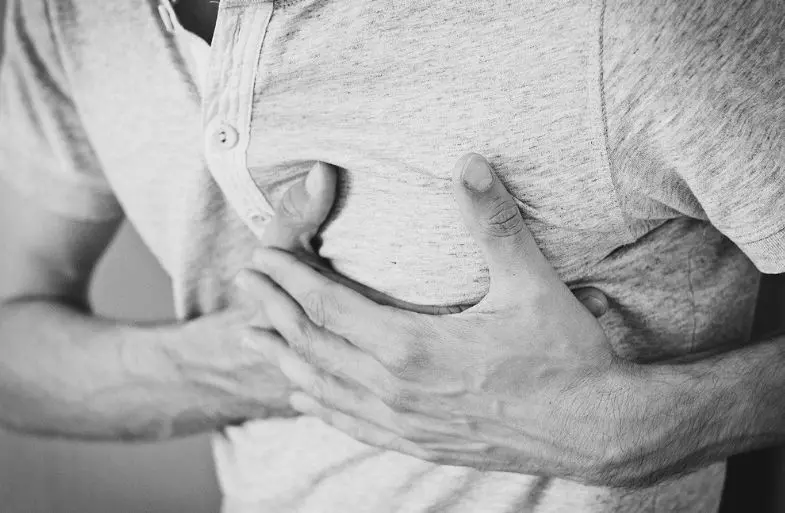Panic Attack Symptom And Panic Disorder
Panic attacks are short period of extreme malaise, anxiety, or fear that occurs suddenly and is accompanied by physical and/or emotional symptoms. Panic disorder involves frequent panic attacks that lead to excessive concern for future attacks and/or behavioral changes aimed at avoiding situations that could trigger an attack.
Panic attacks can induce symptoms such as;
- chest pain,
- choking,
- dizziness,
- nausea, and
- wheezing.
Doctors base the diagnosis on the subject’s description of the attacks and fears of future attacks. Treatment can include antidepressants, anti-anxiety medications, exposure therapy, and psychotherapy.
When do panic attacks occur?
Panic attacks can occur as part of any anxiety disorder. Panic attacks can also occur in people with other psychiatric disorders (such as depression). Some panic attacks arise in response to a specific situation. For example, a person with a phobia of snakes may experience a panic attack when they encounter one. Other attacks arise with no apparent trigger.
Panic attacks are frequent and occur in over 11% of adults every year. Most people recover from panic attacks without any treatment; others develop panic disorder.
Panic disorder consists of worrying about having other panic attacks and/or modifying behavior to avoid them. Panic disorder affects 2-3% of the population over 1 year. Women are 2 times more prone to the panic disorder than men. Panic disorder usually begins in late adolescence or early adulthood.
Symptoms of panic attacks and panic disorder
A panic attack is characterized by the sudden onset of intense fear or discomfort and by at least four of the following psychophysical symptoms:
- chest pain or discomfort
- feeling of suffocation
- dizziness, a tendency to instability or fainting
- fear of dying
- fear of going crazy or losing control
- feelings of unreality, estrangement, or detachment from the surrounding reality
- hot flashes or chills
- nausea, stomach pain, or diarrhea
- numbness or tingling sensations
- palpitations or rapid heartbeat
- wheezing or choking feeling
- sweating
- tremor or fasciculation
Many people with panic disorder also have symptoms of depression. Usually, the symptoms reach their peak within 10 minutes and disappear within a few minutes, leaving only a few traces and the fear of having another terrifying attack.
Because panic attacks can occur for no apparent reason, the person who accuses them often tries to prevent them and is worried about another attack (this condition is called anticipatory anxiety), so they tend to avoid the places they associate with previous attacks of panic.
Because symptoms involve many vital organs, people often worry that they have severe heart, lung, or brain conditions. For example, a panic attack can be perceived as a heart attack. For this reason, people repeatedly turn to their GP or emergency room.
If the diagnosis of a panic attack is not correctly made, the person further worries about a possible underestimation of what they consider to be a serious medical problem. Although panic attacks are sometimes very annoying, often intolerable, they are nevertheless not dangerous.
The frequency of attacks can vary greatly. Some people have attacks every week, if not every day for months, while others have numerous episodes daily, followed by weeks or months of remission.
Diagnosis of panic attacks and panic disorder
Because some severe physical conditions often cause the same psycho-physical symptoms as panic attacks, doctors first make sure that the person does not have a physical condition.
Panic disorder is diagnosed when the person has unexpected, unprovoked, and at least one of the following panic attacks for at least one month. Persistent fear of having other panic attacks or fear of the consequences of the attack (for example fear of losing control or going crazy) changes in behavior due to panic attacks (for example, avoiding situations that could cause an attack).
Once it is understood that a person’s symptoms are caused by panic disorder, doctors try to avoid having the person undergo many tests for future panic attacks unless their symptoms or physical examination findings indicate a new problem.
Treatment of panic attacks and panic disorder
The best form of treatments are; Antidepressants and/or anxiolytic drugs and Psychotherapy, including exposure therapy
In the absence of formal treatment, some people recover, especially if they continue to cope with the situations in which the attacks occurred. In others, symptoms come and go for years.
However, if attacks have been frequent and subjects have modified their behavior to avoid future attacks, drug treatment and/or psychotherapy are often required. People with panic disorder respond better to therapy if they understand that the disease involves both physical and psychological mechanisms and that symptoms can usually be controlled with treatment.
Medicines that you can take (Consult with your doctor before taking any medication)
Medicines used to treat the panic disorder include; Antidepressants, Anxiolytic drugs such as benzodiazepines
Most antidepressants, namely tricyclic antidepressants (TCAs), monoamine oxidase inhibitors (MAOIs), selective serotonin reuptake inhibitors (ISRS), serotonin modulators, and serotonin-norepinephrine reuptake inhibitors (IRSNs) ) are often effective (see Drugs Used to Treat Depression table).
Benzodiazepines work faster than antidepressants, but they can be addictive and make it much easier to make you sleepy, impaired coordination, memory problems, and slow reaction time.
ISR or IRSNs are the preferred drugs as they are as effective as the others but have fewer side effects. For example, they induce less sleepiness and are not addictive, although abruptly stopping most ISRS and IRSN can lead to unpleasant withdrawal symptoms.
Initially, a benzodiazepine and an antidepressant can be prescribed to the person. When the antidepressant starts to work, the benzodiazepine dose is usually reduced, then stopped. For some people, a benzodiazepine is the only long-term effective remedy.
Drug treatment can prevent or greatly reduce the number of panic attacks. However, without psychotherapy, drugs cannot help people worry less about future attacks and stop avoiding the situations that cause panic attacks.
Medicines often have to be taken for a long time, because panic attacks can recur after discontinuation of drug therapy.
Psychotherapy and several types of it are effective.
Exposure therapy involves a gradual and repeated exposure of the subject, with the imagination and/or even really, to everything that triggers a panic attack. Exposure therapy is repeated until people are comfortable with the situation that causes anxiety.
To increase the likelihood of quiet exposure, people are often taught relaxation techniques to use before coping with an anxiety-provoking situation. For example, taking regular, slow breaths is an effective way to reduce the anxiety that can lead to a panic attack.
In exhibition therapy, the subject is repeatedly exposed to the situation or object of the phobia, both literally and by resorting to fantasy. Relives the state of anxiety several times, until the stimulus of fear loses its effect. This process is called addiction.
Doctors usually start with the lowest level of exposure, which is easily tolerated by the person. For example, the subject could be shown the feared object at a certain distance. The doctor then reassures him, explaining that the remote object cannot harm him. If the subject goes into dyspnea or tachycardia, he is asked to react with slow, deep breaths or by doing other relaxation exercises (for example, imagine a reassuring scene).
When the subject feels comfortable at an exposure level, he is gradually exposed to closer contact with the situation or object, but only until the symptoms create problems.
When the subject feels comfortable at an exposure level, he is gradually exposed to closer contact with the situation or object, but only until the symptoms create problems. He is then invited to reassure himself that there is no danger and to repeat the relaxation exercises. The subject is exposed to ever closer contact until he has a complete and normal interaction with the situation or object. Sometimes only a few exposure sessions are needed.
Exposure therapy has two variants: flooding and gradual exposure. In flooding, the subject is exposed to the anxiety-inducing stimulus for 1-2 hours. This technique tends to be unpleasant and is often not well tolerated.
- Gradual exposure provides the subject with greater control over the duration and frequency of exposures.
- Cognitive-behavioral therapy can also help. The subject is taught the following:
- Not to avoid situations that cause panic attacks
- to recognize when his phobia is unfounded
- to cope with anxiety with controlled and slowed breathing or other techniques that promote relaxation
Supportive psychotherapy, which includes education and counseling, is useful because the therapist can provide general information about the disorder, treatment, realistic hopes for improvement, and the support offered by a trusting relationship with their doctor.


